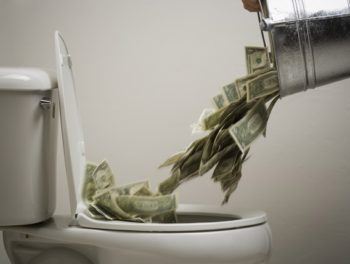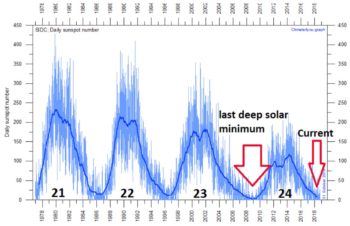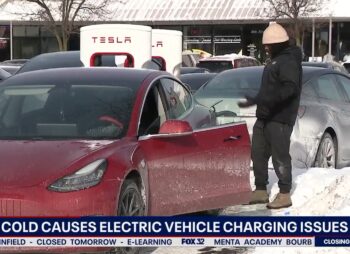
At issue is the country’s first carbon tax. Ballot Initiative 1631 would impose a $15 a ton tax on carbon emitters.
More than 400 community groups, social justice organizations, tribes, and local governments are backing the initiative with fossil fuel companies and rural electric cooperatives opposing it.
The tax would increase $2 a ton every year until the state reaches its emissions goals. Supporters say it would bring in $2.3 billion the first 5 years.
But as with many other issues in the state, there is a huge divide between the more liberal, urban areas and the rural conservative counties. And it is the rural parts of the state that will be slammed by the carbon tax.
NPR:
“Nobody makes any money running cows. It’s just a way of life and that’s the way it’s always been,” Creveling says. His family may be land rich, but Creveling says everyone in the business is cash poor. And that’s where the climate change ballot initiative gets him.
Fossil fuel companies are free to pass the costs of the carbon fee on to customers. According to an independent estimate, the carbon fee would increase gasoline prices by up to 14 cents per gallon per year. Heating, electricity and natural gas prices would also rise.
And in eastern Washington, where winters are colder and people tend to drive more than in the Seattle area, Creveling believes it will put more rural people out of business—that the big corporations won’t feel the pain.
“They don’t ever hold the big people accountable,” he said. “They got enough money that they just get out of it, or they go someplace else.”
“I think their idea was right; we need to do something to reduce carbon but this just isn’t the way to do it,” says Kent Lopez, executive director of the Washington Rural Electric Cooperative Association. WRECA represents 15 utilities in rural Washington that serve roughly 75% of the state by land mass, but only 6% of the population.
Lopez says many of those customers need to drive longer distances, often in less fuel efficient vehicles, than urban residents of the state. They also may make their living in agriculture which involves electricity to operate irrigation and fuel for farming equipment.
“If this didn’t have a negative impact on their ratepayers they [WRECA utility companies] probably would not have voted to oppose it,” Lopez says. “But they looked at it and said, ‘this is not good for our members.'”
A point of contention is the many industries and businesses that will be exempt from the tax.
Jet fuels are exempt, as are maritime fuels. Fuels and electricity used by facilities that are defined as “Energy Intensive Trade Exposed,” such as glass, steel, pulp and paper, aluminum, and chemical manufacturing are also exempt. The millions of barrels of oil that are transported via train through Washington state to its coastal refineries would also be exempt from the fee.
Softening the blow somewhat is the huge amount of hydroelectric power generated in the state. But according to this Carbon Tax Calculator from the Washington Policy Center, the average resident will pay more than $200 a year extra in energy taxes. That’s just in the first year of the tax. It will rise every year by about 12%.
This is a horrible idea and not just because there’s no evidence that a reduction in carbon emissions in one state will have any measurable impact on a reduction in CO2 emissions nationwide.
In effect, this is a vanity tax. It will make liberals in Washington feel good about themselves that they are “doing something” about global warming, but have a zero effect on the nation as a whole.
The people of Washington are being asked to serve as guinea pigs for a liberal experiment with little understanding – and not much concern – of the economic impact the tax will have on ordinary people.
The US leads all countries in reducing carbon emissions and we’re doing it without idiotic environmentalist schemes like cap and trade or a carbon tax. Residents in Washington should keep this in mind when voting on 1631.
Read more at American Thinker

















This carbon tax was defeated yesterday. There were so many built-in exemptions it was essentially a gasoline tax–a fee to burn high cost fuel. The legislation is designed so exemptions could be peeled off when ever more money is needed. The King County liberals will not stop with this failure; it’s all about virtue signaling and revenue enhancement. They know that even if CO2 is reduced the amount is statistically insignificant–there will be no effect either way. Everyone disappointed with this defeat are free to send the state a check equivalent to the amount that they would have paid. The state will be waiting a long time for those checks!
Looking at the past 110 years including all other man made drivers of CO2.
In 1900 there were only about 8,000 cars in the United States and possibly not more than 25,000 worldwide. It was estimated in 2010 that the number of cars had risen to over 1 billion vehicles. A 3030302930% increase of automobiles over 110 years.
World population in 1900 was 1,650,000,000. World population in 2010 was 6,930,000,000. A 320% of worldwide population over 110 years.
Add in massive deforestation for crops and huge herds of sheep, goats, pigs, cows and chickens and….. over 110 years.
Plus… a huge increase in electrical demand over the same 110 years. How much additional CO2 was produced there over 110 years?
Well, if we generously round up all man caused CO2 we could say it increased by some 3030303030% over the same 110 years. Maybe even higher??
With a 3030303030% increase in man caused CO2 levels over 110 years one would expect current CO2 levels to be much much higher. After all, a 3030303030% increase is a lot! No?
No. Considering all other NATURAL sources, man’s contribution to atmospheric CO2 levels is statistically insignificant. See, https://climatechangedispatch.com/massive-volcano-emissions-warming/
But there is a problem with those pesky CO2 levels.
Like, where is this CO2 data collected? And what do those CO2 reading really reflect??
In 1958, Charles David Keeling began making daily measurements of the concentration of atmospheric carbon dioxide (CO2) at the Mauna Loa Observatory on the Big Island of Hawaii. (Mauna Loa, the largest ACTIVE subaerial volcano in both mass and volume)
Why there? The Mauna Loa Observatory is isolated in the middle of the Pacific Ocean and at over 11,000 feet above sea level, the upper NORTH face of Mauna Loa VOLCANO is an IDEAL LOCATION to make measurements of atmospheric carbon dioxide that reflect global trends, not local influences such as factories or forests that might boost or drop carbon dioxide within their vicinity. The CO2 sensors at Mauna Loa are positioned such that they sample an incoming breeze direct from the ocean, unaffected by human activities, vegetation or other factors on the island. The Mauna Loa Observatory is high enough that the incoming breeze, Trade winds, blow from a NE to ENE direction and ride above the thermal inversion layer.
But aren’t volcanoes considerable sources of carbon dioxide themselves. Yes they are. However, the sampling location Keeling chose was to be NORMALLY upwind of Mauna Loa’s vent, and Keeling perfected methods for detecting and correcting intervals when the wind blew the wrong way. Contamination from local volcanic sources is sometimes detected at the observatory, and is then removed from the background data.
BUT. Because they were formed by volcanic activity, the Hawaiian islands are no stranger to eruptions. Mauna Loa and Mauna Kea (dormant) are two huge volcanoes on the Big Island. And there are 5 KNOWN active volcanoes in Hawaii: Lo’ihi, Kilauea, Mauna Loa, Hualalai and Haleakala. Lo’ihi is an underwater volcano; the other four volcanoes are above sea level. There are also UNEXPLORED underwater volcanoes off the coast of Hawaii.
Looking at the historic CO2 levels recorded at Mauna Loa we see the vast majority of the CO2 increase recorded occurred from 1980 through 2018.
The “Problem”. Remember Kilauea?? http://bigislandnow.com/lavamap/
Kilauea, the shield-type volcano on the Big Island of Hawaii, which has been erupting continuously, with increasing activity ever since 1983. Kilauea, one of at least 5 ACTIVE volcanoes in Hawaii, just happens to be located N and E of the Mauna Loa Observatory. UP WIND from the Mauna Loa observatory….OOOPS!
We dont need any stupid tax after all it was a tax on tea that caused the Boston Tea Party whats needed is some Common Sense and Tax on Hot Air for Al Bore and Leonardo DiCaprio to pay and yes all the Global Warming/Climate Change wackos like Greenpeace,NRDC,EDF,Friends of the Earth and the rest of the Global Warming/Climate Change nuts to pay